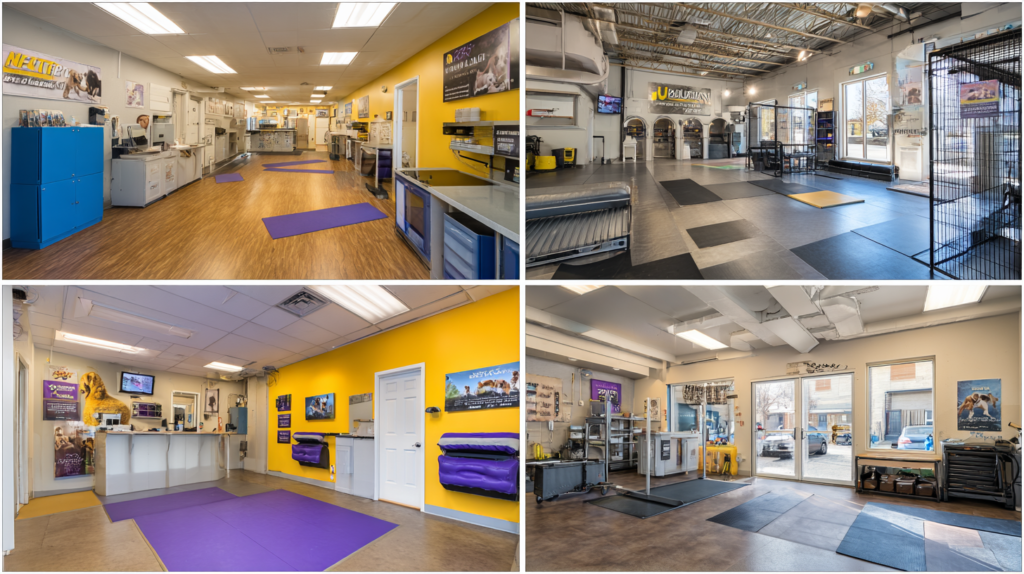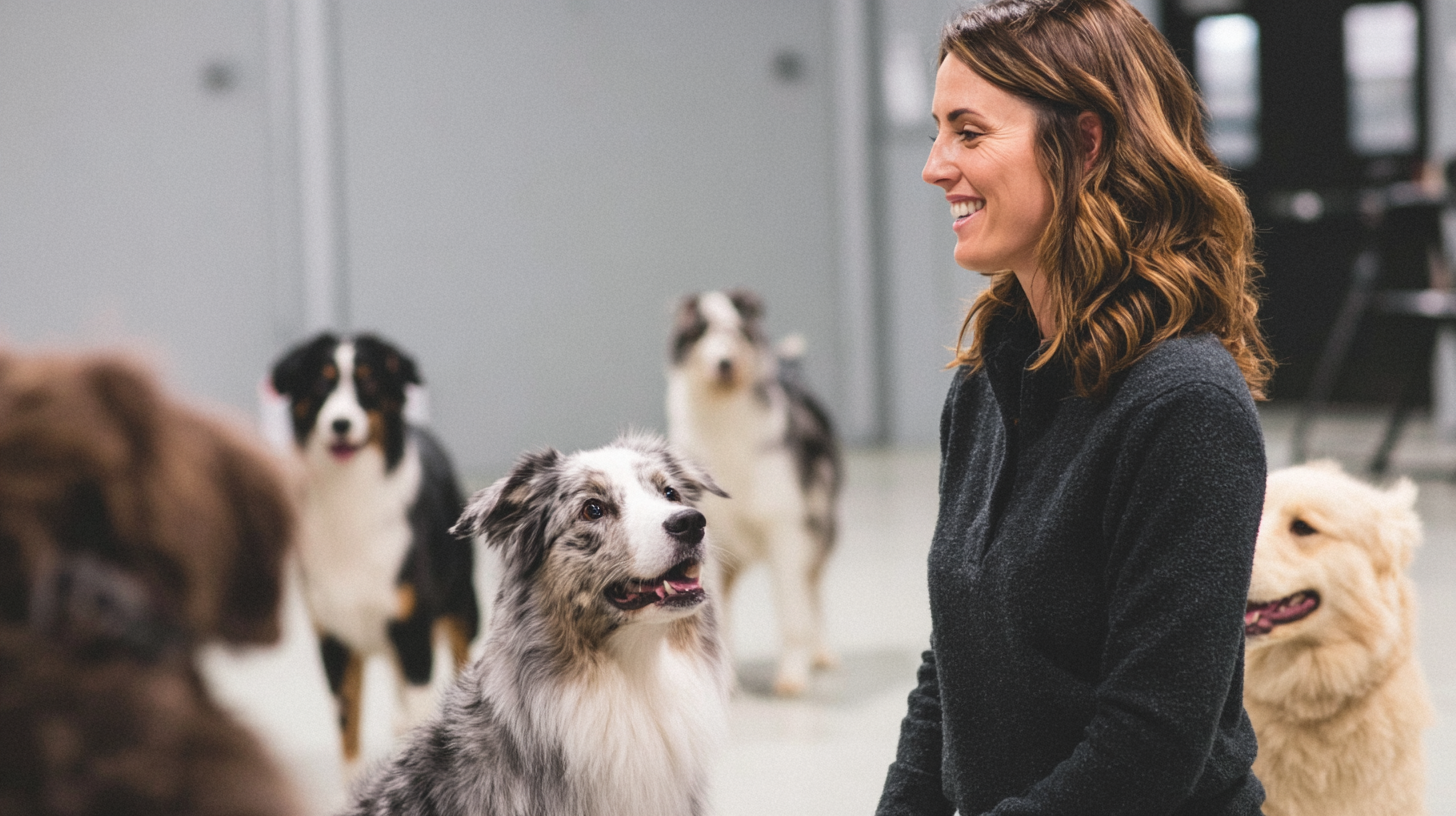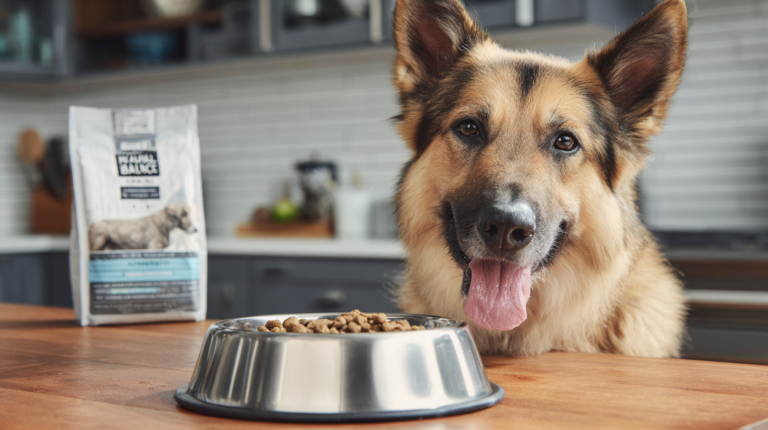Find the best dog obedience classes near me with our expert guide. Compare top training programs, costs, and methods to choose the perfect fit for your pup.
Table of Contents
Did you know that dogs who attend professional obedience classes are 67% less likely to develop behavioral problems later in life? Whether you’re a first-time dog owner struggling with a rambunctious puppy or an experienced pet parent looking to refine your dog’s manners, finding the right dog obedience classes near me can transform your relationship with your furry companion.
Choosing the perfect training program isn’t just about convenience—it’s about finding an approach that matches your dog’s personality, your schedule, and your training goals. With countless options available, from traditional group classes to specialized one-on-one sessions, the decision can feel overwhelming. That’s why we’ve compiled this comprehensive guide to help you navigate the world of dog training and find the ideal dog obedience classes near me that will set both you and your pup up for success.
In this expert guide, we’ll explore the top five types of dog obedience programs available, compare their effectiveness, and provide you with the tools to make an informed decision. Whether you’re dealing with basic puppy training needs or addressing specific behavioral challenges, understanding your options is the first step toward a well-behaved, happy dog.
Understanding Different Types of Dog Obedience Classes

Group Training Classes: The Social Learning Experience
Group training classes represent the most popular choice when searching for dog obedience classes near me, and for good reason. These sessions typically accommodate 6-8 dogs with their owners, creating a controlled environment where dogs learn essential commands while socializing with other pets.
The benefits of group classes extend beyond basic obedience. Dogs learn to focus on their owners despite distractions, a crucial skill for real-world situations. According to the American Kennel Club, dogs trained in group settings show 45% better recall responses in distracting environments compared to those trained individually.
However, group classes aren’t suitable for every dog. Highly anxious, aggressive, or extremely shy dogs may struggle in this environment. Additionally, the pace is set for the average learner, which means quick learners might feel held back while slower learners could feel rushed.
Private One-on-One Training: Personalized Attention
Private training sessions offer the ultimate customization when seeking dog obedience classes near me. These sessions allow trainers to focus entirely on your dog’s specific needs, whether addressing severe behavioral issues or working with a dog that doesn’t thrive in group settings.
The individualized approach means faster progress for dogs with specific challenges. A 2023 study by the International Association of Canine Professionals found that dogs receiving private training showed improvement 3.2 times faster than those in group settings for severe behavioral issues.
The downside? Private sessions are significantly more expensive, typically ranging from $75-150 per hour compared to $15-30 per group class session. Additionally, dogs miss out on the valuable socialization component that group classes provide.
Board and Train Programs: Intensive Immersion
Board and train programs involve leaving your dog with professional trainers for 2-4 weeks of intensive training. This option appeals to busy pet owners or those dealing with serious behavioral problems that require immediate intervention.
These programs can produce dramatic results in a short timeframe. Dogs return home with solid foundation skills and often show remarkable improvement in problematic behaviors. However, the success depends heavily on the owner’s commitment to maintaining the training at home.
Critics argue that board and train programs can create a disconnect between dog and owner, as the dog learns to respond to the trainer rather than the family. Additionally, costs can range from $2,000-5,000, making it the most expensive option among dog obedience classes near me.
Puppy Kindergarten: Early Foundation Building
Puppy kindergarten classes focus on dogs under 6 months old, emphasizing socialization alongside basic obedience. These classes are crucial for proper development, as the socialization window closes around 14-16 weeks of age.
The curriculum typically includes basic commands like sit, stay, and come, combined with controlled play sessions and exposure to various sounds, surfaces, and experiences. Veterinary behaviorists recommend puppy classes as essential for preventing future behavioral problems.
The limitation is the narrow age range—adult dogs who missed early socialization may need different approaches. Additionally, all puppies must be current on vaccinations, which can delay enrollment for some dogs.
Specialized Training Programs: Targeted Solutions
Some facilities offer specialized programs targeting specific issues like aggression, anxiety, or advanced tricks. These dog obedience classes near me serve dogs with particular needs that standard classes can’t address.
Specialized programs often combine elements from other training types. For instance, an aggression program might include individual assessment, controlled group exposure, and family training sessions. Success rates vary widely depending on the specific issue and the dog’s history.
Top 5 Expert Picks for Dog Obedience Classes
1. PetSmart Dog Training: Accessibility and Consistency
PetSmart’s training programs earn the top spot for accessibility and nationwide consistency. With over 1,600 locations across the United States and Europe, finding dog obedience classes near me through PetSmart is rarely a challenge.
Their curriculum follows a structured approach developed by certified trainers, ensuring consistent quality regardless of location. The basic obedience class covers essential commands: sit, stay, come, down, and leash walking. Classes are small (typically 6-8 dogs) and run for 6 weeks with one-hour sessions.
Pros:
- Nationwide availability with consistent curriculum
- Affordable pricing ($119-149 for 6-week programs)
- Positive reinforcement methods
- Convenient scheduling options
- Money-back guarantee if not satisfied
Cons:
- Limited customization for individual needs
- Trainers may have varying experience levels
- Commercial environment may be distracting for some dogs
Best For: First-time dog owners, basic obedience needs, and those seeking convenient, affordable training options.
2. Local CCPDT-Certified Independent Trainers: Expertise and Personalization
The Certification Council for Professional Dog Trainers (CCPDT) represents the gold standard in dog training certification. Independent trainers with CCPDT credentials often provide the highest quality dog obedience classes near me.
These professionals typically offer both group and private sessions, allowing for customized approaches. Their training methods are based on current behavioral science, and they’re required to complete continuing education to maintain certification.
Pros:
- Highest level of professional certification
- Personalized training approaches
- Usually offer both group and private options
- Stay current with latest training methods
- Often provide ongoing support
Cons:
- Higher cost than chain programs
- Limited availability in some areas
- May have waiting lists for popular trainers
Best For: Dogs with specific behavioral challenges, owners seeking evidence-based training methods, and those willing to invest in premium training.
3. Petco Dog Training: Comprehensive Programs with Flexibility
Petco’s training programs offer excellent value and flexibility, making them a strong contender for dog obedience classes near me. Their programs range from basic puppy training to advanced behavioral modification.
What sets Petco apart is their flexible scheduling and make-up class policies. They understand that life happens, and their accommodating approach helps ensure training success. Their trainers use positive reinforcement methods exclusively.
Pros:
- Wide variety of program options
- Flexible scheduling and make-up policies
- Positive reinforcement focus
- Reasonable pricing
- Often includes training materials
Cons:
- Quality can vary by location
- Less personalized than independent trainers
- Limited availability for specialized needs
Best For: Busy families needing flexible scheduling, dogs requiring various training levels, and budget-conscious owners seeking quality training.
4. Local Veterinary Behaviorists: Medical and Behavioral Expertise
Veterinary behaviorists represent the highest level of expertise for dogs with serious behavioral issues. These professionals combine veterinary medicine with behavioral science, making them ideal for complex cases.
While not traditional dog obedience classes near me, veterinary behaviorists often recommend or provide specialized training programs. They can address behavioral issues that have medical components, such as anxiety-related problems or aggression stemming from pain.
Pros:
- Highest level of expertise for behavioral issues
- Can address medical aspects of behavior
- Evidence-based treatment approaches
- Comprehensive assessment and treatment plans
Cons:
- Most expensive option
- Limited availability (fewer than 100 board-certified behaviorists in the US)
- May require referral from regular veterinarian
- Focus on problem behaviors rather than basic obedience
Best For: Dogs with severe behavioral problems, anxiety disorders, aggression issues, or cases where medical factors may influence behavior.
5. Community Recreation Centers: Budget-Friendly Group Training
Many community recreation centers offer dog training classes at significantly reduced costs. These programs provide excellent value for basic obedience training, making them accessible to all pet owners.
While instructors may not have advanced certifications, many have extensive experience and genuine passion for helping dogs and their families. The community setting often creates a supportive, friendly atmosphere.
Pros:
- Very affordable (often $40-60 for multi-week programs)
- Community-focused, supportive environment
- Often conveniently located
- Good for basic obedience needs
Cons:
- Limited instructor credentials
- Basic facilities and equipment
- May not address complex behavioral issues
- Limited program variety
Best For: Budget-conscious owners, dogs needing basic obedience, and those who prefer community-based programs.
Essential Factors to Consider When Choosing Dog Obedience Classes
Training Methods and Philosophy
Understanding the training methods used in dog obedience classes near me is crucial for your dog’s success and wellbeing. Modern, science-based training relies primarily on positive reinforcement, which builds confidence and strengthens the human-dog bond.
Avoid programs that use dominance-based methods, shock collars, or intimidation tactics. The American Veterinary Society of Animal Behavior strongly recommends positive reinforcement training, stating that punishment-based methods can increase anxiety and aggression.
Look for trainers who can explain their methods clearly and provide scientific backing for their approaches. Quality programs focus on teaching dogs what you want them to do rather than simply correcting unwanted behaviors.
Trainer Credentials and Experience
The credentials of your trainer significantly impact the quality of training your dog receives. Look for certifications from recognized organizations like CCPDT, International Association of Canine Professionals (IACP), or Association of Professional Dog Trainers (APDT).
Experience matters, but it should be combined with ongoing education. The field of dog training continuously evolves, and good trainers stay current with new research and methods. Ask about their continuing education and specializations.
Don’t hesitate to ask about their experience with your dog’s specific breed or behavioral challenges. Some trainers specialize in particular issues or breed groups, which can be beneficial for your specific situation.
Class Size and Structure
Class size directly affects the quality of attention your dog receives. Smaller classes (4-6 dogs) allow for more individual attention, while larger classes (8-12 dogs) provide more socialization opportunities but less personalized instruction.
Consider your dog’s needs when evaluating class size. Shy dogs might benefit from smaller classes, while confident dogs might thrive in larger groups. The ideal class size depends on the trainer’s experience and the specific goals of the program.
Location and Scheduling Convenience
The convenience of dog obedience classes near me affects your likelihood of completing the program successfully. Choose a location that’s easily accessible and offers scheduling that fits your lifestyle.
Consider factors like parking availability, facility cleanliness, and the training environment. Indoor facilities offer climate control and fewer distractions, while outdoor spaces provide real-world training opportunities.
What to Expect in Your First Dog Obedience Class
Pre-Class Requirements and Preparation
Before attending your first session, most dog obedience classes near me have specific requirements. Your dog must be current on vaccinations, including rabies, DHPP, and often bordetella (kennel cough). Some programs require proof of negative fecal examination.
Bring your vaccination records, a standard 6-foot leash (not retractable), and high-value treats that your dog loves. Avoid feeding your dog a full meal before class, as hungry dogs are more motivated to work for food rewards.
Mental preparation is equally important. Your dog may be excited or nervous in the new environment, so plan to arrive a few minutes early to allow for adjustment time.
Typical Class Structure and Duration
Most group classes last 60-90 minutes and follow a structured format. Classes typically begin with a brief discussion of the week’s topic, followed by demonstration of new skills, practice time, and homework assignment.
The first class often focuses on basic concepts like attention and name recognition rather than formal commands. This foundation work is crucial for success in subsequent sessions, even though it might seem basic.
Expect to spend equal time learning as your dog. Good trainers teach you how to communicate effectively with your dog and recognize signs of stress, confusion, or success.
Common Challenges and Solutions
Many dogs experience excitement or anxiety during their first class. This is normal and typically improves with exposure. If your dog seems overwhelmed, don’t hesitate to ask the instructor for guidance on managing the situation.
Some dogs become distracted by other dogs or new smells in the training environment. Trainers will help you work through these challenges using techniques like attention exercises and strategic positioning within the class.
Remember that progress takes time. Most dogs need several sessions to fully adjust to the training environment and begin showing consistent improvement in their responses.
Red Flags to Avoid in Dog Training Programs
Outdated Training Methods
Be wary of programs that still use dominance-based methods or tools like shock collars, prong collars, or alpha rolls. These methods are not only outdated but can cause psychological damage and increase aggressive behaviors.
Trainers who talk about being the “alpha” or “pack leader” are using debunked theories. Modern canine behavioral science has moved far beyond these concepts, and quality programs focus on cooperative learning rather than dominance.
Unrealistic Guarantees
No reputable trainer can guarantee specific results within a set timeframe. Dog training depends on numerous factors including the dog’s age, history, breed characteristics, and the owner’s consistency at home.
Be suspicious of programs that promise immediate fixes or claim to solve all behavioral problems in just a few sessions. Quality training is a process that requires time, patience, and consistent practice.
Lack of Transparency
Good training programs are transparent about their methods, costs, and expectations. Avoid programs that won’t let you observe classes before enrolling or that are secretive about their training techniques.
Quality trainers welcome questions and encourage owner involvement throughout the process. They should be able to explain why they use specific methods and how they’ll help your dog succeed.
Poor Facility Conditions
Training facilities should be clean, safe, and well-maintained. Floors should be non-slip, with adequate space for dogs to move around safely. Poor facility conditions can indicate a lack of professionalism and attention to detail.
The training environment should be relatively quiet and free from major distractions during class time. Overly chaotic environments can impede learning and create stress for both dogs and owners.
Making the Most of Your Dog Obedience Classes
Consistent Practice Between Sessions
Success in dog obedience classes near me depends heavily on practice between sessions. Most trainers recommend 5-10 minutes of practice several times daily rather than one long session.
Create a practice schedule that fits your lifestyle and stick to it. Consistency is more important than duration—regular short sessions are more effective than sporadic long ones.
Keep training sessions positive and end on a successful note. This builds confidence and enthusiasm for future training sessions.
Building on Classroom Learning
Use the skills learned in class throughout your daily routine. Practice “sit” before meals, “stay” at doorways, and “come” during play time. This integration helps your dog generalize the behaviors beyond the training environment.
Gradually increase distractions as your dog becomes more reliable. Start practicing in your yard, then progress to parks or busy streets as your dog’s skills improve.
Tracking Progress and Celebrating Success
Keep a training journal to track your dog’s progress. Note successes, challenges, and areas that need additional work. This information helps you and your trainer adjust the training plan as needed.
Celebrate small victories with your dog. Enthusiastic praise and favorite treats reinforce good behavior and strengthen your bond. Remember that every dog learns at their own pace.
Advanced Training Options After Basic Obedience
Canine Good Citizen Certification
The AKC’s Canine Good Citizen (CGC) program provides an excellent next step after basic obedience. This certification demonstrates that your dog has good manners and is well-behaved in public settings.
The CGC test evaluates 10 skills including sitting politely for petting, walking on a loose leash, and remaining calm around other dogs. Many therapy dog organizations require CGC certification as a prerequisite.
Specialized Activities and Sports
After mastering basic obedience, consider activities like agility, rally obedience, or scent work. These activities provide mental stimulation and strengthen the human-dog bond while building on foundational training skills.
Many areas offer beginner-friendly classes in these activities. They’re excellent for high-energy dogs who need additional mental and physical challenges.
Therapy Dog Training
Dogs with calm temperaments and solid obedience skills make excellent therapy dog candidates. Therapy dogs visit hospitals, schools, and nursing homes to provide comfort and companionship.
Therapy dog training builds on basic obedience with specific skills needed for these special visits. The work is incredibly rewarding for both dogs and their handlers.
Understanding Training Costs and Value
Comparing Price Points and Services
Dog obedience classes near me vary significantly in cost, typically ranging from $40 for community programs to $300+ for premium private training. Understanding what’s included in each price point helps you make an informed decision.
Budget options often provide basic instruction with limited individual attention. Mid-range programs typically offer better instructor-to-student ratios and may include training materials. Premium programs provide extensive individualized attention and ongoing support.
Consider the total cost including initial classes, follow-up sessions, and training materials. Some programs offer package deals that provide better value than individual sessions.
Return on Investment
Quality training represents an investment in your dog’s future behavior and your relationship. Well-trained dogs are safer, more enjoyable companions and are less likely to develop behavioral problems that require expensive intervention.
Consider the costs associated with behavioral problems: damaged property, potential liability issues, and the stress of living with a poorly behaved dog. Quality training prevents these issues and pays dividends throughout your dog’s life.
Insurance and Financial Assistance
Some pet insurance policies cover behavioral training, especially if recommended by a veterinarian. Check your policy details or consider adding this coverage when selecting insurance.
Many communities offer low-cost training programs through animal shelters or rescue organizations. These programs provide quality instruction at reduced rates for qualifying families.
When to Consider Professional Help Beyond Basic Classes
Identifying Serious Behavioral Issues
While basic dog obedience classes near me address common training needs, some behaviors require specialized intervention. Aggression toward people or other animals, severe anxiety, or destructive behaviors may need professional assessment.
Resource guarding, excessive barking, or separation anxiety often require specialized approaches beyond basic obedience training. These issues can escalate if not addressed properly, making professional help crucial.
Working with Veterinary Behaviorists
Veterinary behaviorists are veterinarians with specialized training in animal behavior. They can prescribe medication when behavioral issues have medical components and provide comprehensive treatment plans.
These professionals are particularly valuable for complex cases involving multiple behavioral issues or when medical factors contribute to behavioral problems.
Ongoing Support and Maintenance
Even after successful completion of obedience classes, some dogs benefit from ongoing training support. Monthly “tune-up” sessions help maintain skills and address new challenges as they arise.
Consider your long-term training needs when selecting a program. Some trainers offer alumni programs or ongoing support that can be valuable for maintaining your dog’s training.
Educational Table: Comparing Dog Obedience Training Options
Markdown Version:
| Training Type | Duration | Cost Range | Class Size | Best For | Pros | Cons |
|---|---|---|---|---|---|---|
| Group Classes | 6-8 weeks | $119-200 | 6-8 dogs | Basic obedience, socialization | Affordable, socialization, structured curriculum | Less individual attention, set pace |
| Private Training | Ongoing | $75-150/hour | 1-on-1 | Specific behavioral issues | Personalized attention, flexible pace | Expensive, no socialization |
| Board & Train | 2-4 weeks | $2,000-5,000 | Varies | Intensive behavioral work | Fast results, professional handling | Very expensive, owner disconnect |
| Puppy Classes | 4-6 weeks | $100-150 | 4-6 puppies | Early socialization (under 6 months) | Critical socialization period, prevention focus | Limited age range |
| Specialized Programs | Varies | $200-500+ | Small groups | Specific issues (aggression, anxiety) | Targeted solutions, expert instruction | Higher cost, limited availability |
FAQ Section :
Q: How long does it take to see results from dog obedience classes near me?
A: Most dogs show initial improvement within 2-3 weeks of consistent training. However, solid, reliable obedience typically takes 6-8 weeks of regular practice. Complex behavioral issues may require 3-6 months of ongoing work.
Q: What age should my dog start obedience training?
A: Puppies can start basic training as early as 8 weeks old, immediately after their first vaccinations. Adult dogs can begin training at any age, though older dogs may take longer to break established habits.
Q: Are online dog training classes as effective as in-person sessions?
A: Online classes can be helpful for basic concepts and owner education, but they lack the crucial socialization component and hands-on guidance that in-person classes provide. They work best as supplements to, not replacements for, traditional training.
Q: How do I know if my dog trainer is qualified?
A: Look for certifications from recognized organizations like CCPDT, APDT, or IACP. Ask about their training philosophy, experience with your dog’s specific needs, and whether they use positive reinforcement methods.
Q: What should I bring to my first dog obedience class?
A: Bring vaccination records, a standard 6-foot leash (not retractable), high-value treats, and a positive attitude. Some classes provide training materials, while others require you to bring specific items.
Q: Can aggressive dogs attend group obedience classes?
A: Dogs with aggression issues typically need private training or specialized programs before joining group classes. Most group classes require dogs to be non-aggressive toward people and other animals for safety reasons.
Q: How much do dog obedience classes typically cost?
A: Costs vary widely depending on location and program type. Group classes typically range from $100-250 for a 6-8 week program, while private training costs $75-150 per hour. Specialized programs can cost $200-500+.
Conclusion:
Finding the right dog obedience classes near me is a crucial investment in your dog’s future and your relationship together. Whether you choose the accessibility of chain store programs, the expertise of certified independent trainers, or the specialized attention of veterinary behaviorists, the key is selecting a program that matches your dog’s needs and your family’s lifestyle.
Remember that training is an ongoing process that extends far beyond the classroom. The most successful dog-owner teams are those who commit to consistent practice, maintain positive attitudes, and view training as a lifelong journey of learning and bonding.
The time and effort you invest in quality training will pay dividends throughout your dog’s life. A well-trained dog is safer, more confident, and better equipped to be a beloved family member. Start your search today, and take the first step toward the harmonious relationship you and your dog deserve.
For more expert pet care tips and product recommendations, visit BlithePet.com your trusted source for pet wellness.
Have a similar experience with your pet? Share it in the comments below! Don’t forget to check out our other helpful guides at BlithePet.com.







